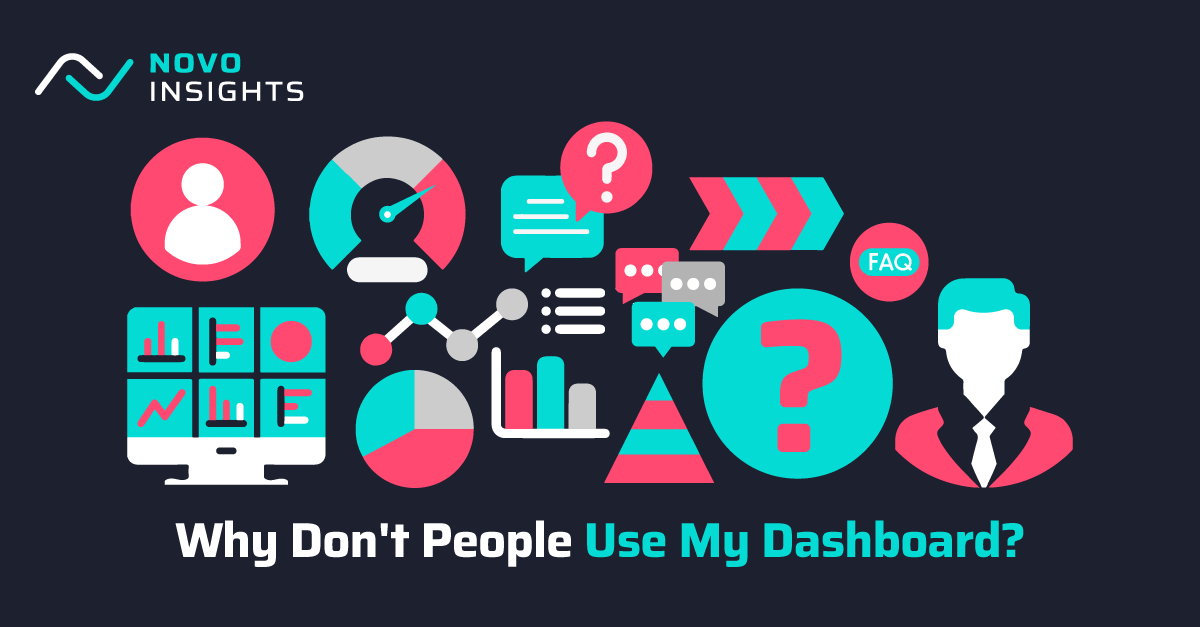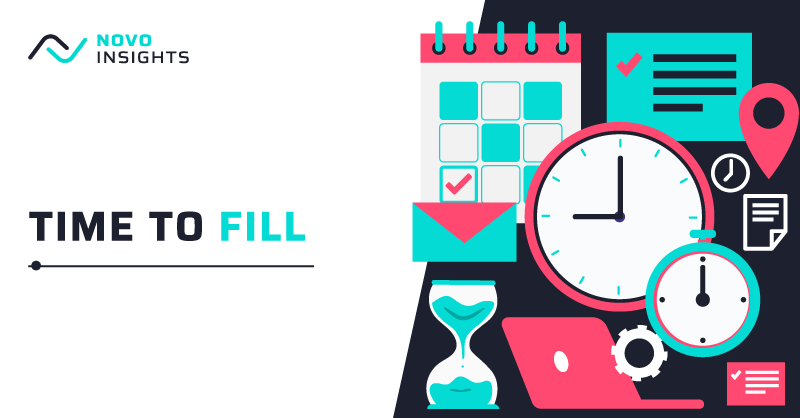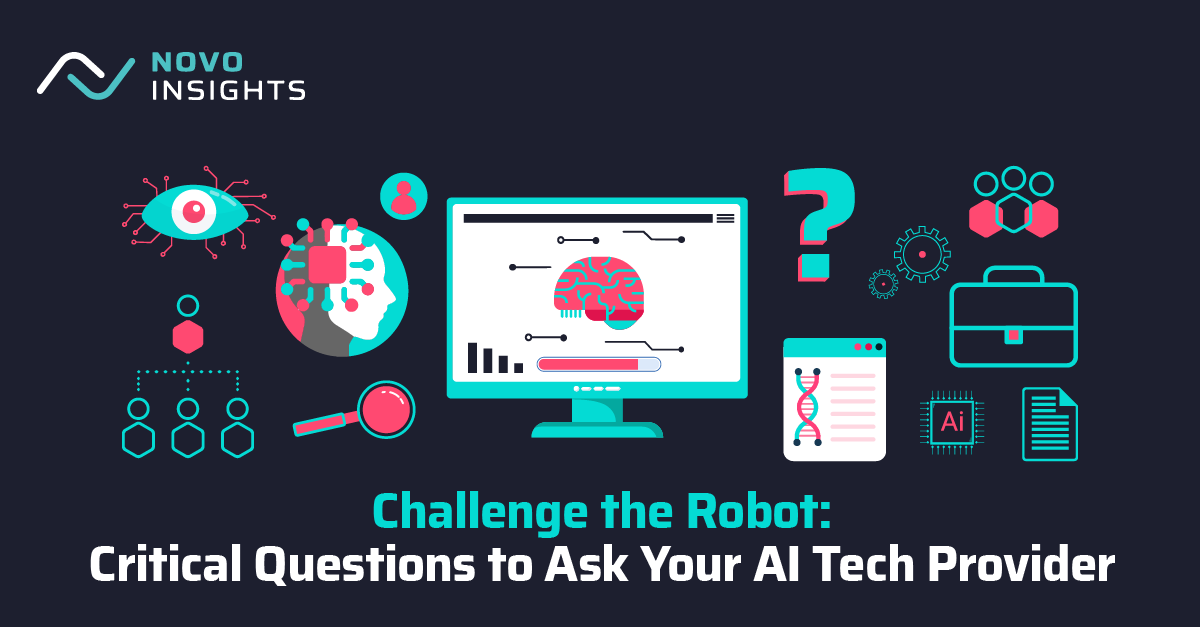You've created a wonderful tool filled with insightful metrics and clear visualizations. You and your team invested hours wrangling the data, clarifying metric calculations, and testing the layout and structure with some trusted voices.
And now... it gets just a few visits per week.
What felt like a major priority and some high-quality work now feels like wasted energy. Your team is disappointed and skeptical of the next request coming. Will that end up on the shelf the same way?
This story is all too common. What went wrong?
Here are the top 5 reasons we see dashboard utilization failing to meet expectations.
#5: They Didn't Need a Dashboard. They Needed a Solution.
Many requests for metrics and dashboards are rooted in a hypothesis or a problem that currently is not well-measured. We think this is going on - so let's measure it. We've seen our call center hold times go up, so let's make sure we have lots of measures and trends around the call center workforce to see what's happening.
If all goes well, you solve the problem. You identify an increase in the time to fill open roles, and you diagnose that the market has tightened with a nearby competitor increasing their starting pay rate. You brainstorm and identify solutions, including a slight increase in starting pay and a broader campaign about the growth opportunities in your organization. You sell the solution to leaders, implement the new programs, and vacancy rates decline.
The dashboard didn't solve the problem. The metrics and analysis may have helped identify the problem, but value was created by creating and implementing the right solution to the problem. The real request was for that solution, not for a dashboard. As a result, the dashboard becomes an artifact of the original problem, but is less useful now that the problem has been solved.
Make sure there is a case for ongoing measurement and analysis before investing in tools for ongoing measurement and analysis.
#4: It's Not Surfaced in the Flow of Work
In most organizations, dashboards live in a certain technology. We have a dedicated People Analytics system that aggregates and models our People data, and we serve up our analytics through role-based permissions in that system.
Dedicated analytics platforms make a ton of sense, but they aren't where most people spend their day. It's another place to check on your list of sites to check, which requires a user to do the following:
- Choose to look for a dashboard
- Know where to find the dashboard
- Navigate to the dashboard
- Log in to that system
- Search for the specific thing they want to see
Five actions, out of their normal work patterns and tools, each of which creates an opportunity for distraction and friction in consuming the dashboard.
Of course, we can't simply make everyone naturally make reviewing our dashboards part of their normal routine. Rather, we need to identify key insights from our dashboards and insert them into the flow of work. For example, having an analyst highlight a key trend or insight and sharing that in a quick message (email, Slack, etc.) may generate more value by increasing visibility.
#3: You're Sharing With the Wrong User
When dashboards are created, it is tempting to share with everyone authorized to see the data. Enterprise deployments of analytics tools have lowered the cost of sharing with an incremental user, and data security methods enable wide sharing of the tool with segmented data visibility. We built a hiring dashboard to assess the speed and diversity of our selection process, and then shared that dashboard with all of HR so they can see what's going on.
Unfortunately, wide sharing often dilutes the focus of the dashboard on a core audience and a job to be done, and can put the data in front of the eyes of the wrong people.
Dashboards are more effective and most consistently utilized when the metrics presented are core to the job being done. The speedometer in the car is utilized because knowing how fast you are moving is central to your role as the driver, and you know what to do with the information it is telling you.
Your dashboard audience needs to be motivated to engage with the data, and data literate enough to know what it means. The right users see value in the data because they know how to act based on its signals. If dashboard utilization is low, it may be because you need to step back and focus on the core user type, how they use the data, and make sure they understand the actions to take. In the example above, there are many HR professionals who can't act upon the diversity or speed of the hiring process. They aren't the right user for that hiring dashboard, whereas the sourcing team and TA leadership would be more likely to engage with the data more regularly.
#2: It's Not A Good Dashboard
As dashboards have become easier to create, there are just a lot of bad dashboards out there. Let's put our headcount on a map view, with circle sizes indicating the number of workers and the shading of the circles indicating the trailing 12-month attrition rate. Next to it, let's show a series of pie charts that break down the ethnicity of our workforce into generational segments.
Bad dashboards will degrade usage as users struggle to accomplish their goals via the data. The above example just has too much going on to encourage meaningful usage.
Among the most common pitfalls we see:
Too many topics. We've fallen in love with getting everything in one pane of glass. But this often dilutes the ability to provide clarity into a specific problem or topic that requires multiple measures. Focus your dashboard on the user's job to be done.
Too many visuals. Every pixel is utilized to surface as many metrics and charts as possible. Some analysts take pride in filling their dashboard with more measures and charts. More isn't always better. White space should be used thoughtfully to enable easier consumption.
Poor visualization design. Pie charts are common, but often make it more difficult to spot stories. Line charts get deployed when bar charts would be simpler. And don't get us started on 3-D effects. Each visual should be purposeful, with chart type selection rooted in the data being monitored.
Your dashboards need to be easy to consume: clear focus, not over-crowded, with the right visualizations.
#1: You're Looking for Usage More Often Than Necessary
Data engineering and integration tools make real-time data integration possible. What used to be monthly updates and refreshes now occur daily or even real-time. With more data and faster time to update, we expect users to be engaging with the data more frequently.
To support our company goal to increase leadership diversity, let's deploy a dashboard that shows the gender and ethnicity representation of our leadership levels. The data will automatically refresh each day when the headcount report updates in the data warehouse.
Here's the problem. People data just doesn't change that much "real time." The people you have in your organization now are the same people in your organization when you started reading this article and will be the same people if you read it all over again. Even daily... weekly... monthly... many People metrics stay relatively fixed for long periods of time. The leadership representation dashboard referenced above didn't change for weeks, and even then the change was quite small since leadership turnover was relatively rare.
The value of data isn't in the speed it can be created or updated. Data is most valuable at the point of decision.
Just because you can update the data daily does not mean it will change, and even if the data changes it doesn't mean it should lead to action. When users need to make a decision or take an action, they need access to the right data to inform that decision or action.
Want to Improve Your Dashboard?
Contact us for a FREE review of your dashboard.





